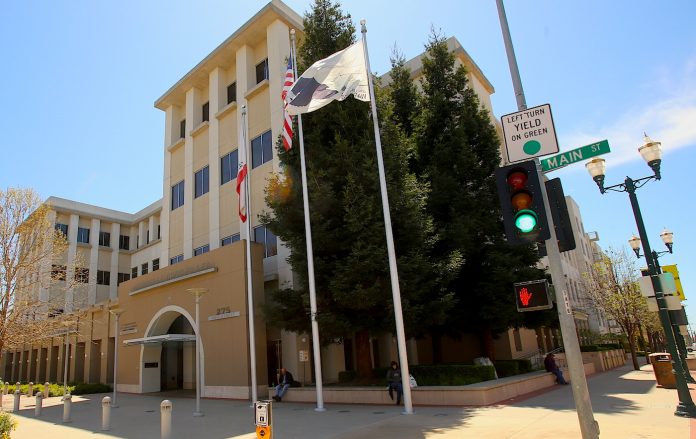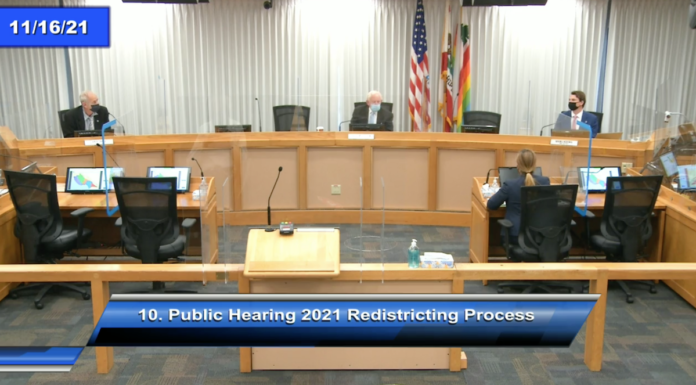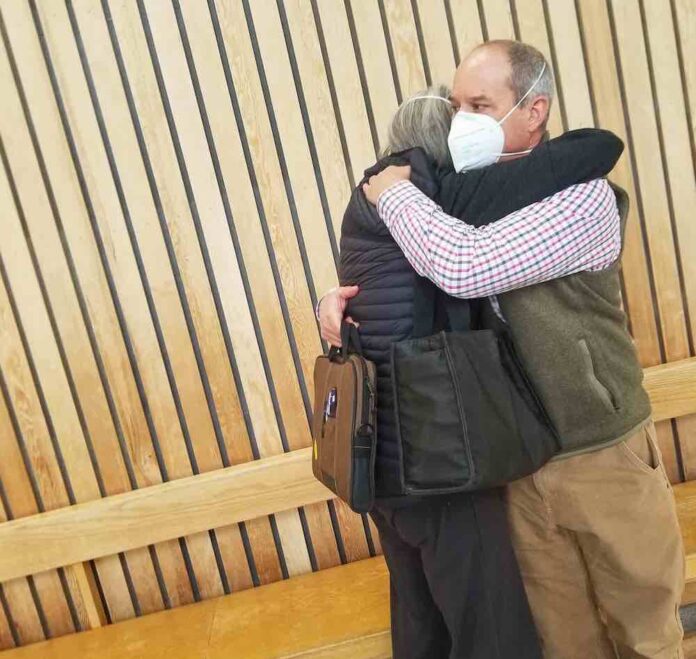A weekly guide to what’s happening.
ARTS AND MUSIC
CELTIC TEEN BAND PROGRAM Teenage musicians ages 12-19 play in an ensemble, developing musicianship, flexibility, and musical creativity. Participants work on music from Ireland, Scotland, Brittany, Norway, Sweden, and the United States, in addition to modern and more quirky pieces. Instruments welcomed include fiddle, viola, flute, tin whistle, pipes, cello, upright bass, guitar, mandolin, banjo, dulcimer, autoharp, ukulele, Celtic harp, accordion and percussion. Students must have at least two years of experience on their instrument and must be able to read sheet music and chord symbols. The group meets twice a month Wednesday afternoons from 3:30-5pm at the London Nelson Center with fiddle teacher John Weed. Cost is free-$10 per session on a sliding scale. Potential students are welcome to come for a session and see if they like it—no obligation! More information and registration at CommunityMusicSchool.org/teenband. Wednesday, Nov. 17, 3:30pm. London Nelson Community Center, 301 Center St., Santa Cruz.
COMMUNITY DRUMMING WITH JIM GREINER IN PERSON Percussionist/Educator Jim Greiner will conduct the next in his monthly Third Friday series of community drumming sessions at the Inner Light Center in Soquel in person from 7-8:30pm; doors open at 6:45pm. The cost is $10. Masks and social distancing requirements will be honored. Jim makes it fun and easy for people from all walks of life to play drums and hand percussion to release stress, to uplift and energize yourself, and to reinforce positive life rhythms through percussion playing. Friday, Nov. 19, 7-8:30pm. Inner Light Center, 5630 Soquel Drive, Soquel.
FORTUNATE YOUTH PERFORMING LIVE WITH ARTIKAL SOUND SYSTEM The So Cal powerhouse reggae-rock band Fortunate Youth has released their fifth full-length studio album Good Times (Roll On) on Controlled Substance Sound Labs. Bringing a fresh sound dotted with influences of blues, ska, rock, world, and soul, while they reunite once again with their fans on tour. The new album is out now and available everywhere you stream music. Friday, Nov. 19, 9pm. The Catalyst Club, 1011 Pacific Ave., Santa Cruz.
GLOW: COMMUNITY ART PROJECT RECEPTION A reception and celebration of community art contemplating gratitude, engaging in creative expression, and connecting to the community. Art is available on a donation basis. Donations will fund local art programs and will be collected by the Felton Library Friends. For details please join us at the reception at Felton Branch Library Community Room from 1-4pm. Sunday, Nov. 21, 1pm. Felton Branch Library, 6121 Gushee St., Felton.
LATE NIGHT At THE MAH Don’t miss the launch of our new series, Late Night at the MAH! The museum will be open from 7-10pm featuring a mash-up of current exhibits, The Art of the Santa Cruz Speed Wheel & Ocean of Light: Submergence, plus live music from local punk rock legends Seized Up and a NHS screening of Speed Freaks, a 1989 skate movie by Tony Roberts. The screening of Speed Freaks will begin at 7:30pm then Seized Up will perform at 8:45pm! This masked event has limited capacity. Bring your friends, check out amazing art, buy NHS Speed Wheel merch, and enjoy the show! Thursday, Nov. 18, 7-10pm. Santa Cruz Museum of Art and History (MAH), 705 Front St., Santa Cruz.
MORTON MARCUS POETRY READING WITH GARY YOUNG Please join us for the 12th annual Morton Marcus Poetry Reading, featuring honored guest Gary Young. Poet Danusha Laméris will host the program, and the evening will include an announcement of the winner of the Morton Marcus Poetry Contest (recipient receives a $1,000 prize). Gary Young is the author of several collections of poetry. His most recent books are That’s What I Thought, winner of the Lexi Rudnitsky Editor’s Choice Award from Persea Books, and Precious Mirror, translations from Japanese. His other books include Even So: New and Selected Poems; Pleasure; No Other Life, winner of the William Carlos Williams Award; Braver Deeds, winner of the Peregrine Smith Poetry Prize; Days; The Dream of a Moral Life, which won the James D. Phelan Award; and Hands. He has received a Pushcart Prize, and grants from the National Endowment for the Humanities, the National Endowment for the Arts, the California Arts Council, and the Vogelstein Foundation, among others. In 2009 he received the Shelley Memorial Award from the Poetry Society of America. Young was the first Poet Laureate of Santa Cruz County, and in 2012 he was named Santa Cruz County Artist of the Year. Since 1975 he has designed, illustrated, and printed limited edition letterpress books and broadsides at his Greenhouse Review Press. His fine print work is represented in numerous collections including the Museum of Modern Art, the Victoria and Albert Museum, The Getty Museum, and special collection libraries throughout the U.S. and Europe. He teaches creative writing and directs the Cowell Press at UCSC. Register online at thi.ucsc.edu/event/gary-young-morton-marcus-poetry-reading. Thursday, Nov. 18, 5:30pm.
PUMP BOYS AND DINETTES Filled with an exuberant mixture of country/pop/rock and musical theatre tunes, Pump Boys is a slice-of-life show about some down-home folks who run the local gas station and diner in a rural southern town. This cast of characters and their straightforward take on life, love and music will leave you tapping your foot and smiling from ear to ear. Wednesday, Nov. 17, 7:30pm. Thursday, Nov. 18, 7:30pm. Friday, Nov. 19, 8pm. Saturday, Nov. 20, 8pm. Sunday, Nov. 21, 2pm. The Colligan Theater, 1010 River St., Santa Cruz.
COMMUNITY
A CALL TO ACTION: INSPIRED BY ‘NOT IN OUR TOWN’ FILMS This is a bilingual program with live, simultaneous Spanish interpretation. As part of the national United Against Hate Week movement, SCPL has partnered with Santa Cruz County United for Safe and Inclusive Communities to bring community members together through films, conversations and actionable opportunities to prevent hate violence and to build safe, inclusive environments where everyone can participate in public life. Join community leaders as they discuss the topics raised in ‘Not in Our Town’ short films and share their perspectives on addressing and preventing hate/bias incidents that occur in Santa Cruz County. Hear differing community approaches to supporting policies and system changes that contribute to a safe and more inclusive community. We invite people from all walks of life to discover how every community member can play a part charting a better future. Films will be made available for free viewing during United Against Week on the Watsonville Film Festival virtual platform. Link will be provided Nov. 14-20, 2021. Watching the selection of Not In Our Town Films is recommended, but not required to participate and learn. Our facilitator for this event is Rabbi Paula Marcus. Registration is required for this virtual event, please visit santacruzpl.libcal.com/event/8478954. Wednesday, Nov. 17, 6:30pm.
BEAUTIFUL GOWNS FOR SALE AT BARGAIN PRICES The Daisy Store has recently acquired over 200 high-quality gowns and would like to pass on this opportunity to the public at discount prices. The sale will feature 80% off brand new gowns, originally priced at $80-$800. The gowns range from glitzy to subdued and are available in sizes 4-20. They are perfect for any occasion where a bit of glamour is needed—mothers of the bride, quinceaneras, proms, New Year’s Eve, or whatever, wherever, and whenever your heart desires. All proceeds support Family Service Agency programs. Sunday, Nov. 21, 1-4pm. The Daisy Store, 1601 41st Ave., King’s Plaza Shopping Center, Capitola.
CUÉNTAME UN CUENTO Acompáñanos para una hora de cuentos, actividades y canciones en español. Este programa es para niños de 0-8 y sus familias. La hora será miércoles a las 4:30pm. Nos reuniremos en el porche exterior. Cuéntame un Cuento se llevará a cabo en Capitola durante el período de construcción de Live Oak. En caso de mal clima, se cancelará la hora de cuentos. Join us for Spanish Storytime, activities, and music! This program is best suited for kids ages 0-8 and their families. Storytime takes place on Wednesday at 4:30pm. We will meet on the outside porch. Storytime will take place at Capitola during Live Oak’s construction period. In the event of bad weather, storytime will be cancelled. Wednesday, Nov. 17, 4:30pm. Capitola Library A Santa Cruz City County Public Library Branch, 2005 Wharf Road, Capitola.
DOWNTOWN SANTA CRUZ MAKERS MARKET Come on out and support local makers and artists at the Downtown Santa Cruz Makers Market every third Sunday of the month. We are now on the 1100 block of Pacific Ave. between Cathcart and Lincoln Streets near New Leaf and alongside so many amazing downtown restaurants. Support local and shop small with over 30 Santa Cruz County artists and makers! Don’t forget to stop in and visit the downtown merchants and grab a bite to eat from the downtown restaurants. Remember to social distance as you shop and wear your mask. If you’re not feeling well, please stay home. There will be hand sanitizing stations at the market and signs to remind you about all these things! Free event, friendly leashed pups are welcome! Sunday, Nov. 21, 10am-5pm. Downtown Santa Cruz Makers Market, Pacific Ave., Santa Cruz.
FELTON TODDLER TIME Join Librarian Julie on our beautiful Felton patio for Toddler Time. Toddler Time is a weekly early literacy program for families with children ages 0-3 years old. Music, movement, stories, fingerplays, rhymes, and songs are a fun way for your child to learn. Let’s play and learn together! Make sure to bring something to sit on. We ask that adults please wear a mask. Repeats weekly. Wednesday, Nov. 17, 11am. Felton Branch Library (NEW), 6121 Gushee St., Felton.
GREY BEARS BROWN BAG LINE Grey Bears are looking for help with their brown bag production line on Thursday and Friday mornings. Volunteers will receive breakfast and a bag of food if wanted. Be at the warehouse with a mask and gloves at 7am. Call ahead for more information: 831-479-1055, greybears.org. Thursday, Nov. 18, 7am. California Grey Bears, 2710 Chanticleer Ave., Santa Cruz.
INTERFAITH MEMORIAL SERVICE AND CANDLE LIGHTING Honor Your Loved One in a Special Holiday Memorial Service. Join us in-person (masks required) or online on November 17th via Resurrection Catholic Community Church’s live stream. A cherished annual tradition, our Interfaith Memorial Service and Candle Lighting is an invitation to pause during the busy holiday season and tune into what counts: remembering a beloved family member, or dear friend, who has died. Whether your loved one recently passed or is someone who you have carried in your heart for many years, this memorial service nourishes tender hearts by honoring both the sadness and joy that comes with remembrance. Our community gathers for words of support, candle lighting, and a remembrance table, for which you are welcome to bring a photograph or object of your loved one. Children and families are welcome. Watch the live stream at youtube.com/channel/UC-OOaTsxzpSPs60Qlt0CIKQ. Wednesday, Nov. 17, 6:30pm. Resurrection Church, 7600 Soquel Drive Aptos, Aptos.
KNITTING AT THE FELTON LIBRARY Join us every Monday afternoon at the Felton Branch for a knitting party. All you need to do is bring some yarn and knitting needles. All ages are welcome. Monday, Nov. 22, 12:30pm. Felton Branch Library, 6121 Gushee St., Felton.
LA SELVA BEACH PRESCHOOL STORYTIME Join us for a fun interactive storytime. We’ll read books, sing songs and use rhythm and movement. This event is suitable for children ages 3-6 years. There will be an arts and crafts project to take home. This event will be held outside on the back patio. Please bring something to sit on and dress for the weather. Masks will be required. Repeats weekly. Tuesday, Nov. 23, 11am. La Selva Beach Branch Library, 316 Estrella Ave., La Selva Beach.
PRESCHOOL STORYTIME IN THE SECRET GARDEN Join us in the Secret Garden in Abbott Square at the MAH for storytime! We’ll share stories, songs and rhymes in a safe environment! This 30-40 minute program is intended for children aged 2-6. Do it yourself craft kits will be provided every week. Every other week we will feature STEM-related stories and concepts. Tuesday, Nov. 23, 11am. Abbott Square, 118 Cooper St., Santa Cruz.
R.E.A.D.: REACH EVERY AMAZING DETAIL CAPITOLA R.E.A.D. is one-on-one reading comprehension instruction for readers second-12th grade. Instructors are California credentialed teachers. Sessions are 25 minutes long. By appointment only. Contact SCPL Telephone Information if you have any questions: 831-427-7713. Wednesday, Nov. 17, 3pm. Capitola Library A Santa Cruz Public Library Branch, 2005 Wharf Road, Capitola.
R.E.A.D.: REACH EVERY AMAZING DETAIL @ DOWNTOWN R.E.A.D. is one-on-one reading comprehension instruction for readers second-12th grade. Instructors are California credentialed teachers. Sessions are 25 minutes long. By appointment only. Contact SCPL Telephone Information if you have any questions: 831-427-7713. Thursday, Nov. 18, 3pm. Santa Cruz Public Libraries – downtown, 240 Church St., Santa Cruz.
R.E.A.D.: REACH EVERY AMAZING DETAIL @ LA SELVA BEACH R.E.A.D. is one-on-one reading comprehension instruction for readers second-12th grade. Instructors are California credentialed teachers. Sessions are 25 minutes long. By appointment only. Contact SCPL Telephone Information if you have any questions: 831-427-7713. Wednesday, Nov. 17, 3pm. La Selva Beach Branch Library, 316 Estrella Ave., La Selva Beach.
COMMUNITY PILATES MAT CLASS Come build strength with us. This very popular in-person community Pilates Mat Class in the big auditorium at Temple Beth El in Aptos is in session once again. Please bring your own mat, small Pilates ball and theraband if you have one. You must be vaccinated for this indoor class. Suggested donation of $10/class. Thursday, Nov. 18, 10am. Tuesday, Nov. 23, 10am. Temple Beth El, 3055 Porter Gulch Road, Aptos.
GROUPS
ENTRE NOSOTRAS GRUPO DE APOYO Entre Nosotras support group for Spanish speaking women with a cancer diagnosis. Meets twice monthly. Registration required, please call Entre Nosotras 831-761-3973. Friday, Nov. 19, 6pm. WomenCARE, 2901 Park Ave., Suite A1, Soquel.
S+LAA MENS’ MEETING Having trouble with compulsive sexual or emotional behavior? Recovery is possible. Our small 12-step group meets Saturday evenings. Enter through the front entrance, go straight down the hallway to the last door on the right. Thursday, Nov. 18, 6pm. Sutter Maternity & Surgery Center, 2900 Chanticleer Ave., Santa Cruz.
WOMENCARE ARM-IN-ARM WomenCARE Arm-in-Arm Cancer support group for women with advanced, recurrent, or metastatic cancer. Meets every Monday, currently on Zoom. Registration is required, call WomenCARE at 831-457-2273. All services are free. For more information visit womencaresantacruz.org. Monday, Nov. 22, 12:30pm.
WOMENCARE MINDFULNESS MEDITATION Mindfulness Meditation for women with a cancer diagnosis. Meets the 1st and 3rd Friday, currently on Zoom. Registration Required: WomenCARE 831 457-2273. Friday, Nov. 19, 11am-noon.
WOMENCARE TUESDAY SUPPORT GROUP WomenCARE Tuesday Cancer support group for women newly diagnosed and through their treatment. Meets every Tuesday currently on Zoom. Registration required, call WomenCARE 831-457-2273. Tuesday, Nov. 23, 12:30-2pm.
WOMENCARE: LAUGHTER YOGA Laughter yoga for women with a cancer diagnosis. Meets every Wednesday, currently via Zoom. Registration is required, please call WomenCARE at 831-457-2273. Wednesday, Nov. 17, 3:30-4:30pm. WomenCARE, 2901 Park Ave., Suite A1, Soquel.
OUTDOOR
CASFS FARMSTAND Organic vegetables, fruit, herbs and flowers are sold weekly at the CASFS Farmstand, starting June 15 and continuing through Nov. 23. Proceeds support experiential education programs at the UCSC Center for Agroecology & Sustainable Food Systems. Friday, Nov. 19, Noon-6pm. Tuesday, Nov. 23, Noon-6pm. Cowell Ranch Historic Hay Barn, Ranch View Road, Santa Cruz.
ENVIRONMENT VS. ECOLOGY: DECODING THE DECLINE OF A KELP FOREST ECOSYSTEM IN NORTHERN CALIFORNIA Bull kelp forests experienced unprecedented losses along 220 miles of coastline in Northern California beginning in 2014 after the onset of a large marine heatwave and the local extinction of sunflower sea stars (sea urchins primary predator). These losses have had devastating consequences to the region’s communities, economies, and fisheries. Similar to the nature versus nurture debate in psychology, it can be equally challenging to tease apart environmental and ecological drivers (also known as “top down versus bottom up”) in ecosystem dynamics. Using a suite of diver and satellite-derived data, join Meredith McPherson, Ph.D. Department of Ocean Sciences, UCSC, as she describes historical patterns of kelp canopy coverage in Northern California, decodes how and why this event occurred, and provides perspective on the future of these iconic marine ecosystems. Register in advance for the online Science Sunday webinar (required). seymourcenter.science.ucsc.edu/calendar_event/november-science-sunday/ Please register at least one hour prior to event start time. Sunday, Nov. 21, 1:30-2:30pm. Seymour Marine Discovery Center, 100 McAllister Way, Santa Cruz.
HISTORIC RANCH GROUND TOUR Discover what life was like a century ago on this innovative dairy ranch. This hour-long tour includes the 1896 water-powered machine shop, barns and other historic buildings. The vehicle day-use fee is $10. For more information, call 831-426-0505. Spaces are limited and early pre-registration is recommended. Attendees are required to self-screen for Covid-19 symptoms when pre-registering. Masks and social distancing are also required at all programs. Saturday, Nov. 20, 1-2pm. Sunday, Nov. 21, 1-2pm. Wilder Ranch State Park, 1401 Coast Road, Santa Cruz.
SUNSET BEACH BOWLS Experience the tranquility, peace and calmness as the ocean waves harmonize with the sound of crystal bowls raising vibration and energy levels. Every Tuesday one hour before sunset at Moran Lake Beach. Call 831-333-6736 for more details. Tuesday, Nov. 23, 6:30-7:30pm. Moran Lake Park & Beach, East Cliff Drive, Santa Cruz.





















